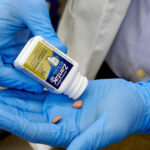The National Transportation Safety Board has issued five safety recommendations following completion of its investigation of the Aug. 27, 2016, chlorine release from a ruptured rail tank car near New Martinsville, West Virginia.
There were eight injuries reported in connection with the accident that released 178,400 pounds of liquefied compressed chlorine over two and a half hours. The release occurred after a rail tank car (DOT-105) sustained a 42-inch long crack in its tank shell shortly after being loaded at the Axiall Corp.’s Natrium plant.
As a result of the NTSB’s investigation the agency issued five safety recommendations, three of which were issued to the Pipeline and Hazardous Materials Safety Administration and one each to the Association of American Railroads and American Railcar Industries, Inc.
The recommendations issued to PHMSA call for:
- Enhanced fracture toughness requirements for tank heads and shells for pressure tank cars used to transport poison inhalation hazard/toxic inhalation hazard materials.
- Prohibiting use of tank cars transporting poison inhalation hazard/toxic inhalation hazard materials that are constructed of non-normalized steels and are not constructed of steels meeting the highest available fracture toughness specifications.
- Maintenance guidance for owners of DOT-105 pressure tank cars transporting poison inhalation hazard/toxic inhalation hazard materials to establish structural integrity inspection frequency, define critical flaw size, repair and acceptance criteria for fracture-sensitive locations and nondestructive testing methods to detect and identify cracks.
The NTSB said it wants the Association of American Railroads to ensure local post-weld heat treatment processes are sufficiently monitored to avoid damage to tank car materials.
The NTSB’s recommendation to the American Railcar Industries focuses on inspection and maintenance procedures to address cracks in cradle pad weld attachments.
Was this article valuable?
Here are more articles you may enjoy.

 Report Using Aerial Imagery Keys in on Hailstorm Risks to Colorado Homes
Report Using Aerial Imagery Keys in on Hailstorm Risks to Colorado Homes  Sanofi to Pay $100 Million to Settle Zantac Cancer Lawsuits
Sanofi to Pay $100 Million to Settle Zantac Cancer Lawsuits  Harvard Study Again Stirs the Pot on Demotech Ratings of Florida Carriers
Harvard Study Again Stirs the Pot on Demotech Ratings of Florida Carriers  CoreLogic Report Probes Evolving Severe Convective Storm Risk Landscape
CoreLogic Report Probes Evolving Severe Convective Storm Risk Landscape 